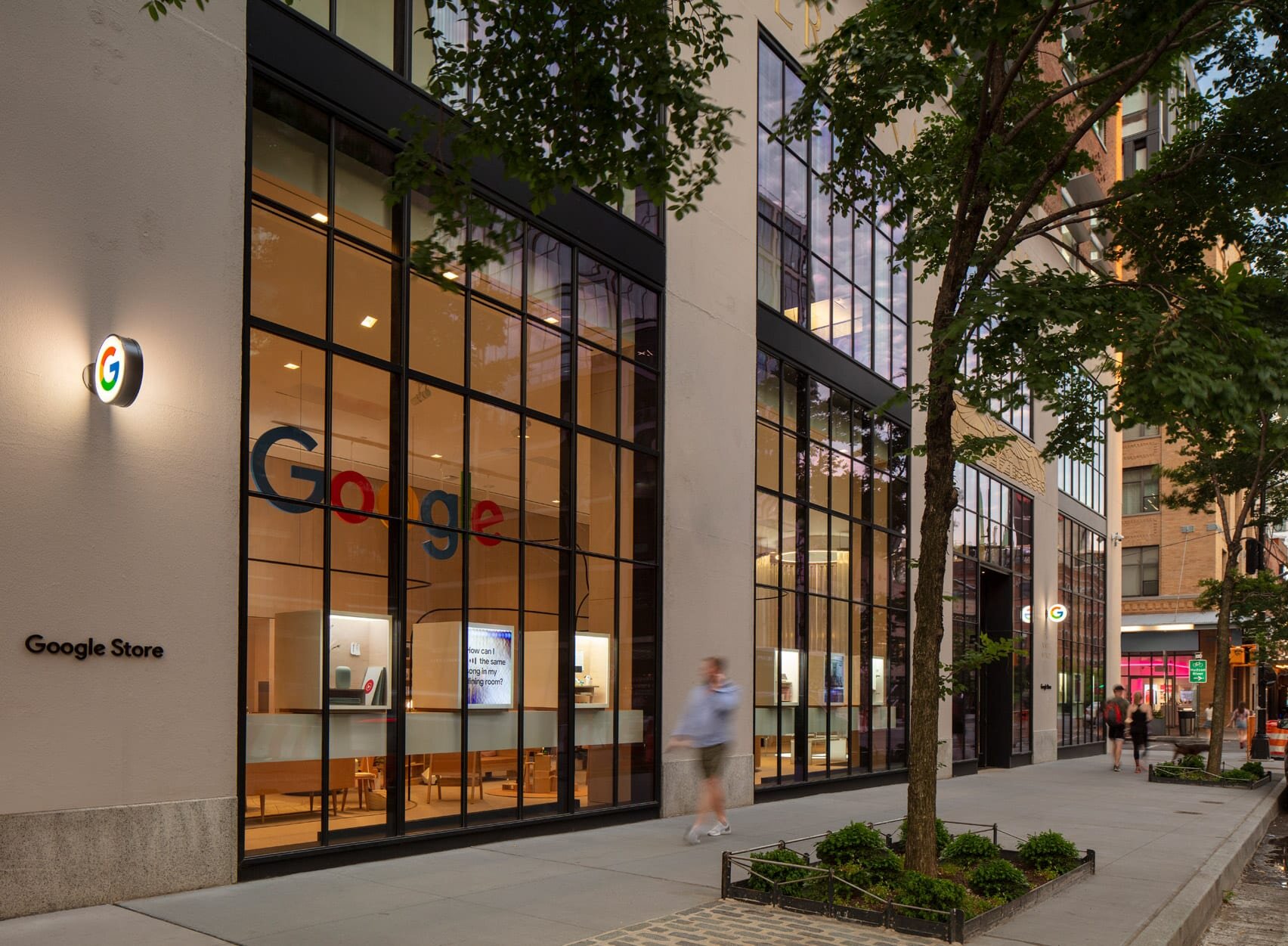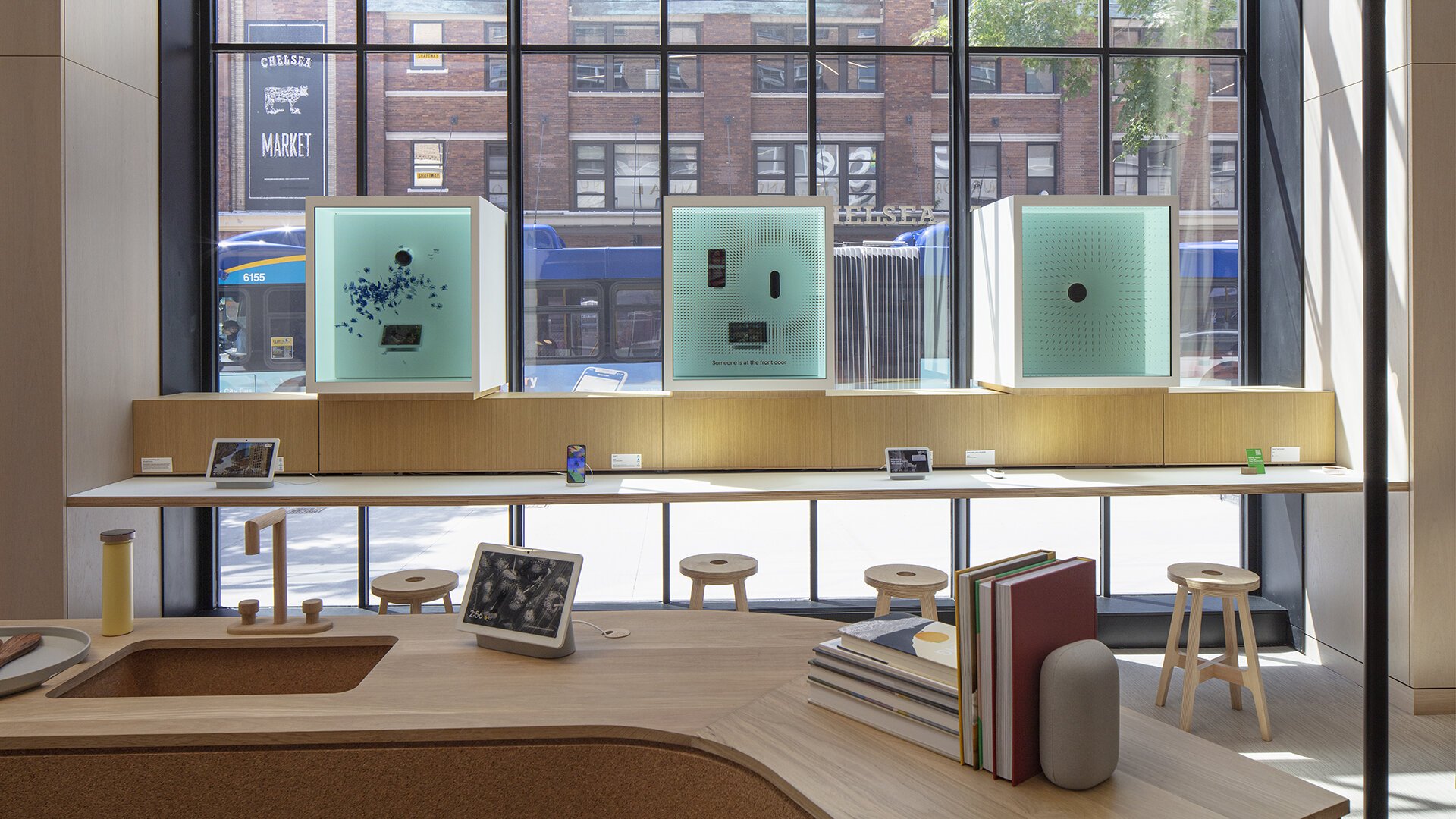Google opens its first physical retail space in NYC
Images courtesy of Google.
Google has launched its first physical retail store in Chelsea, New York, designed by the architecture studio Reddymade featuring cork furniture and recycled materials.
The Google Store opened to the public on June 17, 2021, is located on the ground floor of the old Port Authority Building, which houses the internet giant's New York headquarters.
During Milan's Salone del Mobile in 2019, architect Suchi Reddy of Reddymade collaborated with Ivy Ross, VP of design, UX, and research for Google Hardware, to create a retail experience based on their brand partnership.
To create an appealing ambience in the main area, warm and tactile elements such as wood panelling and Daniel Michalik's cork furniture were used.
"Reddymade's design puts the visitor at rest, embracing both those seeking assistance and those exploring their curiosity," the studio said in a statement.
The Imagination Space, which is formed by tubes of extruded glass suspended between the floor and ceiling at the entrance, allows visitors to engage with Google products and technologies through a series of screens.
A thin black metal line cuts a flowing course across the store, drawing the eye between the numerous product displays.
A neon halo surrounds a centre circular counter that serves as a support desk, writing out "Here to Help" numerous times in a ring.
Shoppers and those seeking product advice or assistance can use casual seating such as benches, pouffes, and stools.
Illuminated "exploration boxes" in the windows highlight Google items and let passers-by too engage with them using augmented reality technology.
Among these are Swedish business Bolon's flooring produced entirely of recycled manufacturing waste, and US producer Kirei's acoustic panels with a felt-like texture made entirely of PET plastic and containing at least 60% post-consumer content.





